Sarreguemines
Charming Antique Oblong French Platter - Minton - Sarreguemines - c1870s
Charming Antique Oblong French Platter - Minton - Sarreguemines - c1870s
Couldn't load pickup availability
Such a charming, delightful antique French porcelain platter!
Produced in the late 19th Century by Sarreguemines, the platter features a beautiful Chinoiserie pattern called "Minton": a profusion of flowers like peonies, pompom flowers, ancient roses, cherry blossom. And in the middle, a bird trying to catch a butterfly. A light frieze completes the whole. The handles are sculpted and painted in brown. A stunning piece!
Why was it named after the famous English porcelain manufacturer? I would love to know, my guess is that it was those two companies met at one of the fairs in the mid- to late 19th century. Either at "The Great Exhibition" in 1851 at the Crystal Palace in London, where Minton was a great success, or at one of the five "Exposition Universelle" in Paris in the second half of the 19th century. Maybe this pattern was designed in collaboration?
- Material: Porcelain
- Pattern: Decor n ° 252 - "Fly and bird" or "Minton"
- Style: Chinoiserie
- Technique: Imprint transfer enhanced with a brush
- Place of Origin: France
- Mark: Lorraine coat-of-arms under a mural crown, no additions. Used approx. from 1860 until 1922.
- Date of Manufacture: around 1870
- Condition: Almost mint: no shine, no crack, no restoration. There is a small chip of 2 mm on one of the long sides, hardly visible.
Dimension:
Length: 30 cm | 11,8 in
Depth: 22 cm | 8.6 in
Height: 2.5 cm | 1 in
Share
- Worldwide Shipping
- Secure Packaging
- Loving Curation
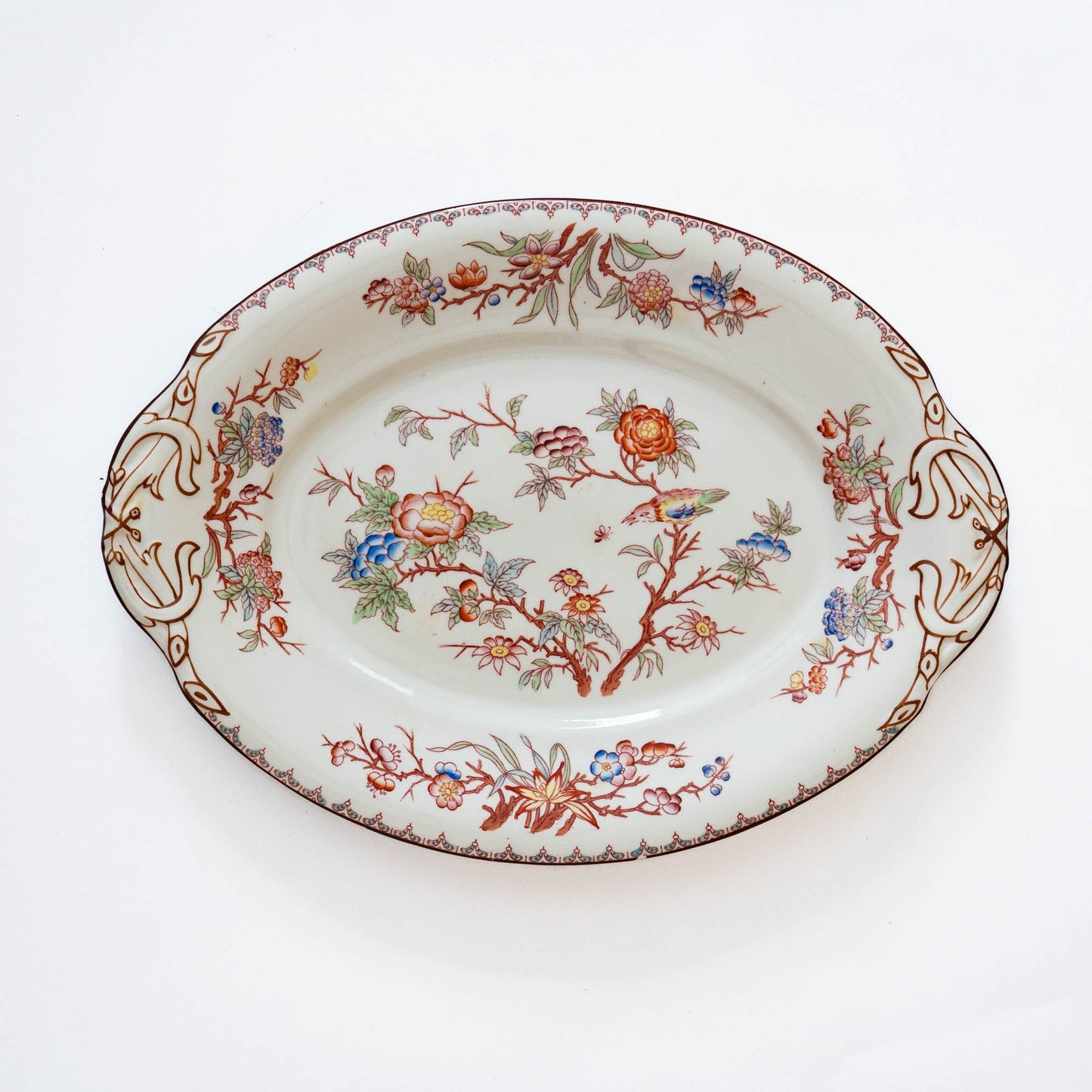
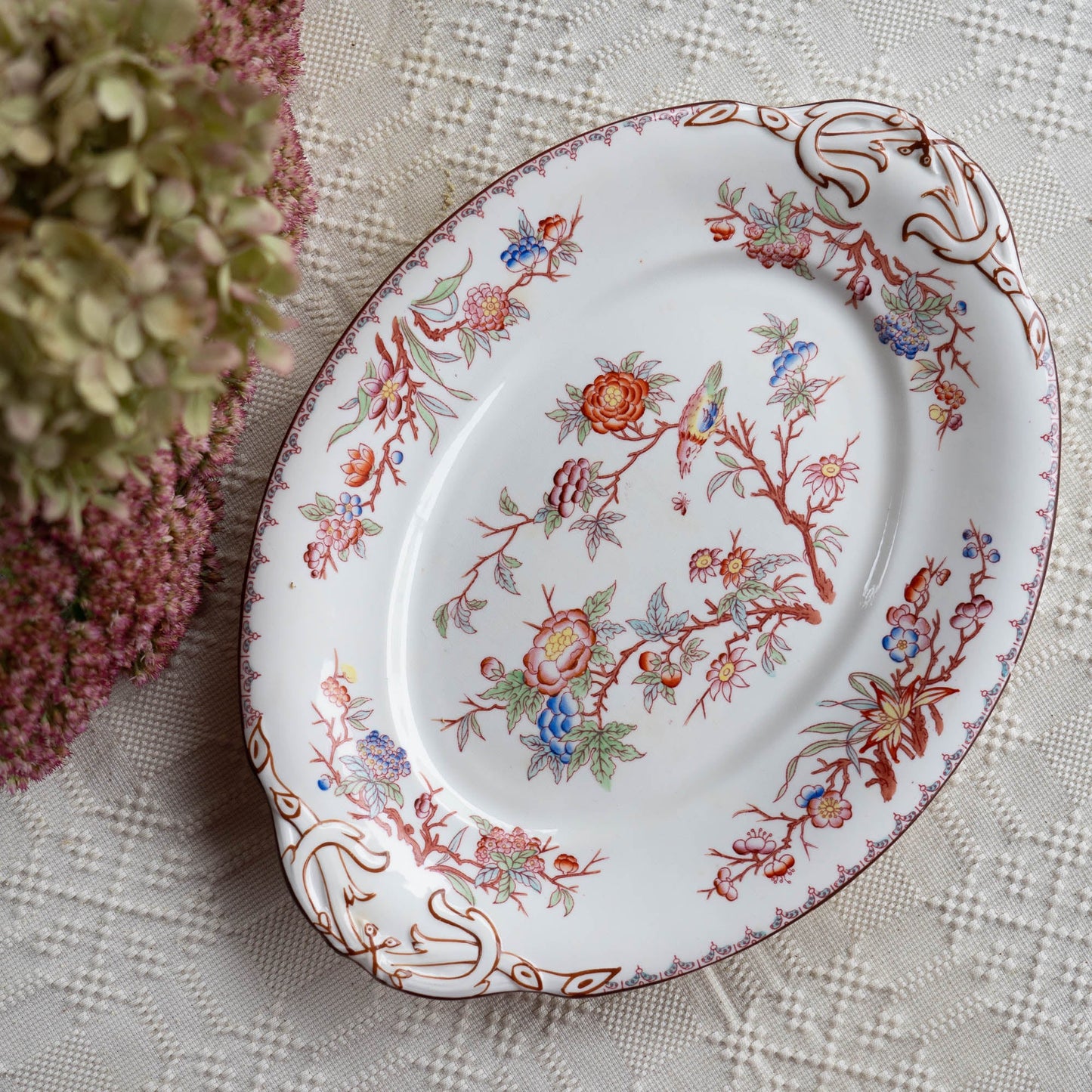
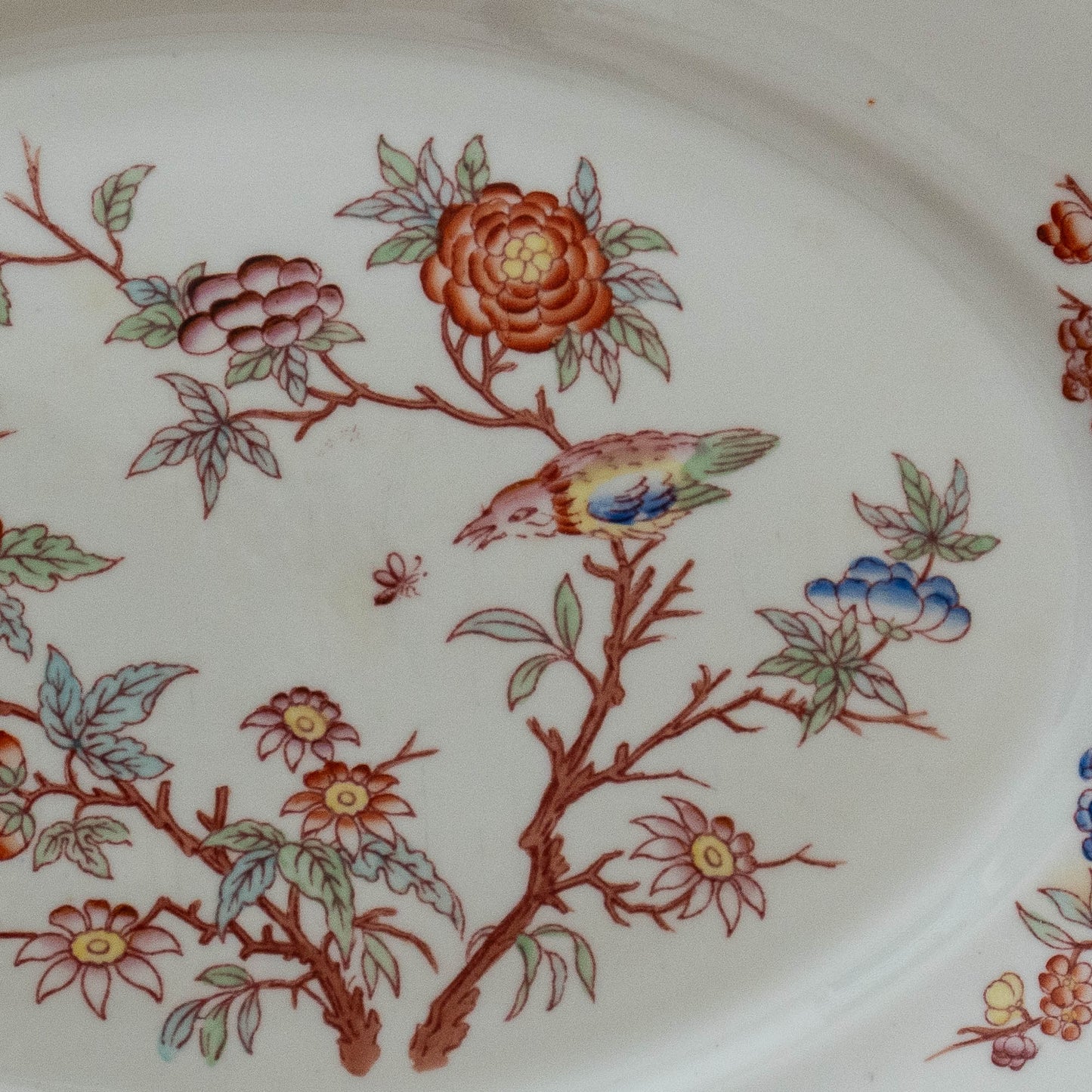
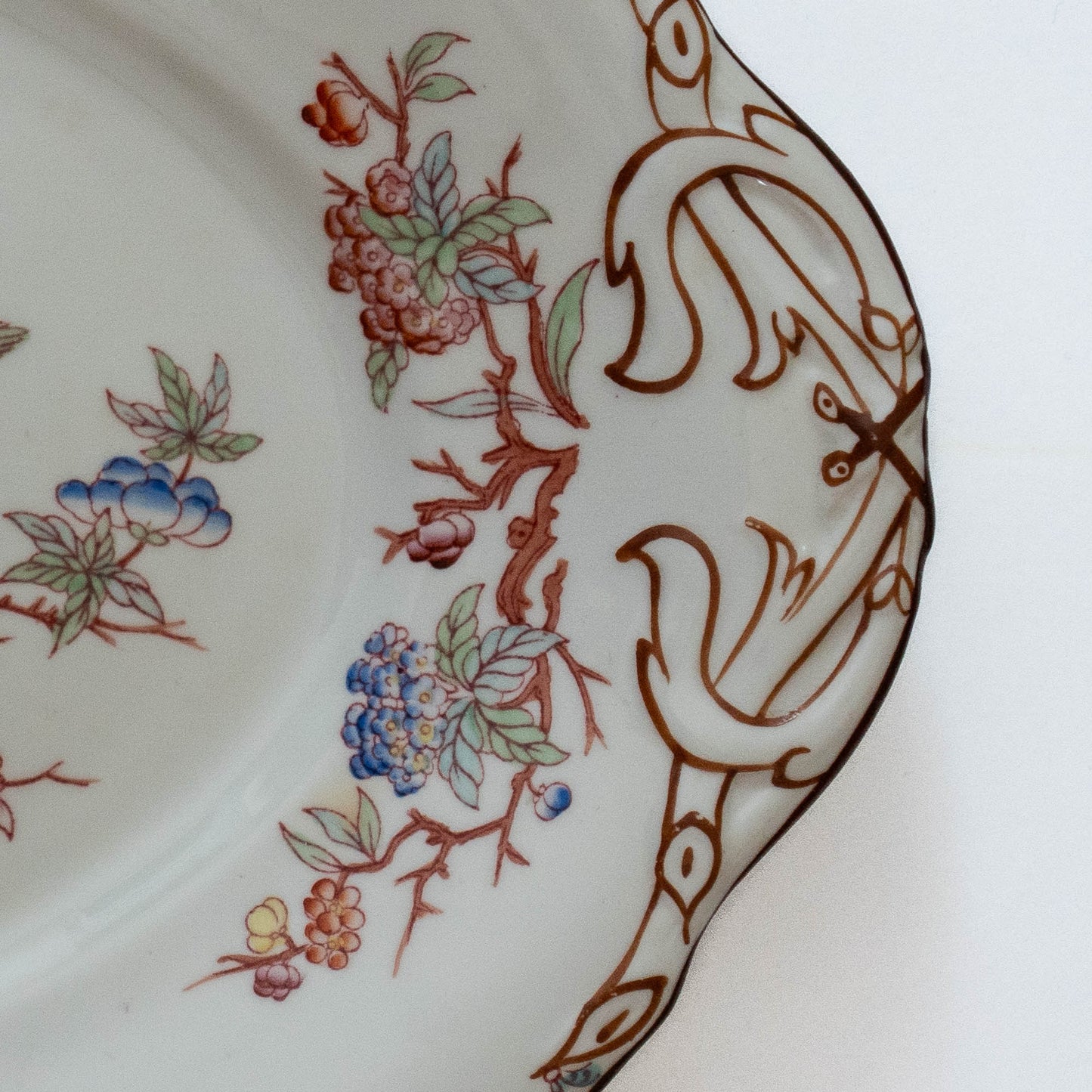
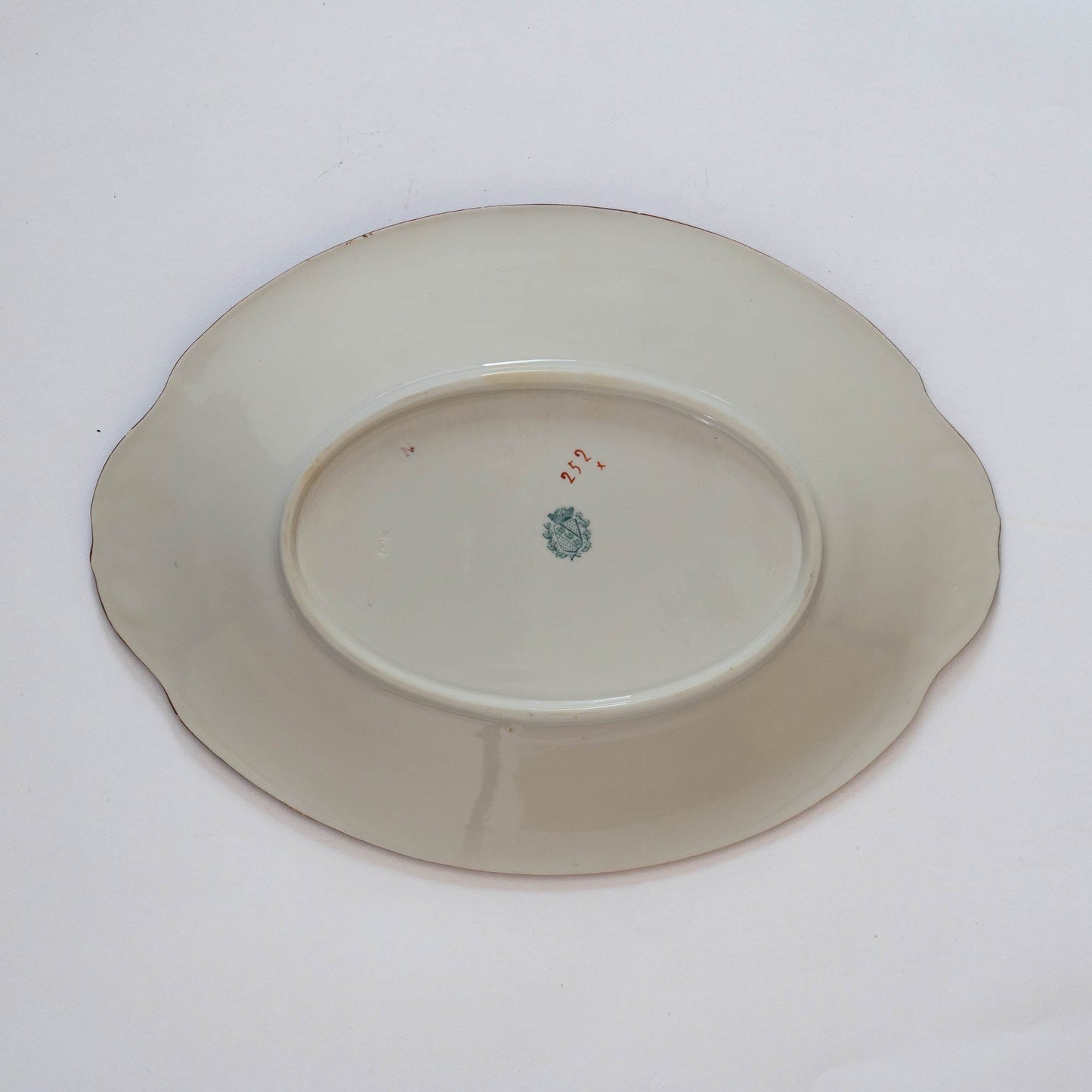
Origin & Maker
Sarreguemines is a renowned French faience company that has been producing beautiful ceramics since the late 18th century. Founded in 1790 in the town of Sarreguemines, near the French-German border, the company quickly gained a reputation for creating high-quality earthenware and faience pieces. By the 19th century, Sarreguemines had become one of France’s leading ceramics manufacturers, producing finely decorated tableware, tiles, and decorative items.
Sarreguemines gained international recognition when they showcased their work at the Exposition Universelle in Paris in 1867, a world fair that celebrated industrial and artistic achievements. This exposure helped solidify the company's reputation for innovation and craftsmanship, with their decorative faience pieces becoming highly sought after across Europe.
The company is best known for its intricate Majolica designs, vibrant glazes, and detailed hand-painting. Sarreguemines continued to flourish through the 19th and early 20th centuries, producing everything from rustic faience to elegant Art Nouveau ceramics. Today, pieces from Sarreguemines are cherished by collectors for their rich history and exquisite craftsmanship, embodying the artistry of French faience.
Blog posts
View all-

A Serendipitous Morning at the Rue de Bretagne ...
There are few joys in life that match the thrill of stumbling upon a hidden treasure, and for me, flea markets hold that magical allure. One of my favourite flea...
A Serendipitous Morning at the Rue de Bretagne ...
There are few joys in life that match the thrill of stumbling upon a hidden treasure, and for me, flea markets hold that magical allure. One of my favourite flea...
-

Emile Bourgeois and "Le Grand Dépôt" in Paris
Recently, I found this stunning Sarreguemines wash set. It was at the Brocante in Belfort, France. On this day, we had got up at 4 AM to be there in...
Emile Bourgeois and "Le Grand Dépôt" in Paris
Recently, I found this stunning Sarreguemines wash set. It was at the Brocante in Belfort, France. On this day, we had got up at 4 AM to be there in...
-

The Legacy of Robert Haviland: A Journey from N...
The story of Robert Haviland porcelain is one of artistry, transatlantic ambition, and enduring heritage. It begins in the mid-19th century when David Haviland, an enterprising New Yorker, founded Haviland...
The Legacy of Robert Haviland: A Journey from N...
The story of Robert Haviland porcelain is one of artistry, transatlantic ambition, and enduring heritage. It begins in the mid-19th century when David Haviland, an enterprising New Yorker, founded Haviland...








